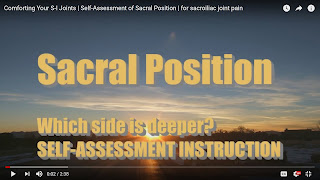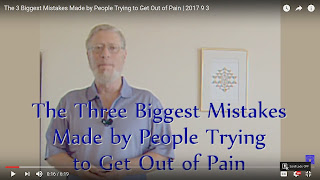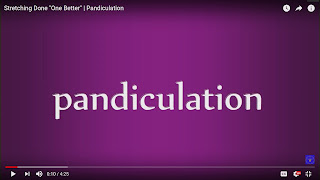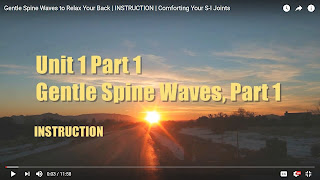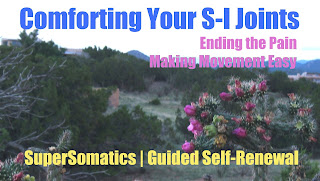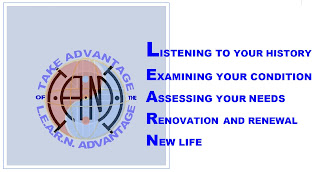
This entry provides an alternative to sleeping pills.
It’s for you if:
- you have insomnia — either chronic or occasional
- you’ve experienced the downside of taking a drug to get to sleep
- you want a natural alternative
- you’re able to get yourself to try something different
Who I, the Author, Am
I’m a clinical practitioner of method of brain retraining used to dissolve stress and trauma. I developed this approach based on the principles of my field, a branch of mind-body training called, Clinical Somatic Education. I, myself, have used the method described, here, to get back to sleep, when I’ve awoken in the middle of the night and not been able to get back to sleep. It generally takes about ten minutes, once I’ve used it, to fall asleep. Based on its success with me (and with others), I published the, Getting to Sleep, audio program.
Getting to Sleep and The Big Squeeze of Stress
Are you insomniac? Does sleep deprivation make your life seem stark or extreme? Are you over-sensitized? Are you exhausted?
Here’s a way to exit the cycle of insomnia. Understand why it works.
WHY MOST INSOMNIA HAPPENS
Two great polarities exist in every life: activity and rest. Insomnia happens when we get stuck (stressed) in a state of emotional and physical activation.
That state of stress takes two familiar forms:
- “wired” mind
- relentless muscle fatigue
WIRED MIND
Three kinds of “wired” mind keep us from relaxing into sleep:
- endless thinking
- troubled remembering
- fearful imagining
Those three ways of being mentally “wired” tie directly into muscular or physical tension.
Being
“mentally wired” is today’s high-tech version of being “plain
old-fashioned wound up.” Being it’s the electronic age, we can talk
about being “hard-wired” in certain ways and tie that idea of wiring to
the brain’s control of our muscles — and I will, shortly. But what’s
wound up is still wound up: Our “idling speed” is too high and our air
mix (breathing) isn’t too good either. We may be driving with the brakes
on (resistance to life-developments), and what’s more, our steering may
be out of alignment (be misguided).
All told, this
has nothing to do with body mechanics. It really has to do with our
programming — how we run our lives and how well we de-bug ourselves —
because, when we get bugged, sleep suffers.
Sound
strange? Don’t worry. I’m going to tell you about two natural ways of
debugging ourselves, so that we no longer have “bedbugs”.
We’re
going to start with two general ways people get bugged, what the
“bugging” looks and feels like, and then how to debug ourselves. Onward.
TWO REFLEXES OF STRESS
People
get crazy in life in two basic ways, ways that correspond to two basic
reflexes of stress that get triggered in us, in life. One is a “fear or
urgency” form of stress and the other is an urgency or “control
freak” form of craziness. Sometimes they happen together, and yes, each
corresponds to a reflex pattern that involves muscular tension.
The form of stress associated with urgency, or the drive (and felt necessity) to get things (often, too much) done, triggers the muscles in the back of the body. They get tight and they stay tight as long we we are uptight.
There’s a healthy form of this reflex, which I am about to describe, and an unhealthy form, which I am also about to describe.
In
the healthy state, this reflex starts our movement from rest or a position of repose into activity. It involves the muscles that stiffen the
flexible spine in preparation for moving from repose into the upright position of walking or other activities, when
spinal support is needed. It tightens the shoulders and muscles in other places. There’s a
name for this reflex: the Landau reaction. You can look it up. It starts
up as we first learn to crawl and continues at-the-ready throughout a
lifetime.
The other state of stress, associated
with self protection and fear, triggers a physical muscular reflex that
tightens the muscles in the front of the body. It causes shallow
breathing, speeds up the heart rate, and makes us want to bring our head
down (cower) in an urge to curl up into a ball (fetal position).
This
muscular action gets triggered every time we feel afraid or anxious and
stays triggered as long as we’re afraid or anxious. (It’s also been
identified as an underlying cause of heart attacks.) There’s a name for
this reflex: the Startle reflex. You may have seen video of people in
this state: soldiers running in a crouched state, under fire. They have
been trained to run that way because it’s natural self-protection — as
natural as Startle Reflex. In fact, they’re helped to run that way by
Startle Reflex. Soldiers are afraid; you’d better believe it. They’ve
just been trained to override their fear — the way so many of us have
learned to override our feelings.
About soldiers, what do you think PTSD (Post-Traumatic Stress Disorder) is? It’s habituated, reflexive states-of-craziness anchored in troubled remembering, fearful imagining, and compulsive thinking.
The state of overactive, out of control muscles goes exactly along with troubled
remembering, fearful imagining, and compulsive thinking — which all
trigger the “ready responses” we’ve learned, ostensibly to handle the
situations about which we are feeling urgency or fear, but which simply
make us crazy and make sleep impossible. Are you an exception? Is
insomnia not like that, for you? OK. I’ve got something for you, at the
end: The Gold Key Release. It’s for the exceptions to the rule. You’ll
like it.
When you’re “crazy awake” at night, when
no position in bed makes a difference — and no bed makes a difference
— have you discovered it’s next to impossible to stop thoughts,
memories and imaginings? Efforts to stop them reinforce them, don’t
they? They leak back in. Even if you distract yourself with reading or
counting sheep, do you end up thinking about what you’ve just read — or
about sheep?
I’m here to suggest to you that there is a
secret, “back-door” key to get thoughts, memories and imaginings — and
sheep — to stop taking over your mind. There’s way to release the
muscular tensions that go along with them. Those muscular tensions have a
certain feeling that goes exactly along with your compulsive thinking,
memory replays, and fearful imaginings; they are the feelings of
your compulsive thinking, memory replays, and fearful imaginings. One
triggers the other and back again, and around and around, we go.
You need a way to release to get the relief. There’s a “back door” way. It works. No kiddin‘.
I
will tell you right away that stretching is not the “back-door” key to
release. Neither are breathing exercises or yoga (neither of which go
deeply enough for to reach and reprogram chronic insomnia). None of
those approaches reaches the control level where the reflexes of stress,
Startle reflex or Landau reaction, live, which is exactly where they
MUST reach, for you to get to sleep. Certain kinds of meditation might
help — but you’ve got to be far enough along in your mindfulness
practice for it to work. Are you? (You are? Why are you reading this?)
Neither, by the way, do “sleep number” or “Tempur-Pedic
mattresses” change your stress level, and neither do “sleep-aid” drugs.
How can you reprogram your insomnia with things that have nothing to do
with your body’s programming?
WHAT WORKS
What
you need to do is get control of yourself. No, not that way. I have
something else, in mind: a way to release the muscular reflexes of
stress that trigger your insomnia, from inside. That means, learn to
relax, to relax by unlearning keeping yourself wound —
or wired — up. You learn to relax the way you might relax a clenched
fist. You don’t stretch a clenched fist open; you relax it by natural,
internal control. That’s the direction you go, to unwind.
Only, you seem to have lost your way. So, you need to re-learn
that kind of natural internal control that ordinarily would function,
naturally. The way to that kind of control is related, actually, to
yawning. It has a strange name: it’s called pandiculation.
PANDICULATION: LIONS DO IT, TIGERS DO IT, BEARS DO IT, AND SO DO WE
Pandiculation is an movement or action pattern that every
animal with a backbone does, generally when arising from rest and upon
finishing an activity — and also at random throughout the day. Cats do
it, dogs do it, even lumbering hogs do it. They do it, naturally, but
for certain reasons related to “way of life”, humans have to be re-taught to do it. Pandiculation feels good. It’s good for you.
Here’s a five minute video explaining pandiculation.
But instead of pandiculating,
at work, to regulate their stress (which they could do, in minutes, in an office
chair or at a company gym or even on the carpet in a private office), people go for coffee to get “wired”. Then,
at home, they go for a “drink” or something related — or for a run, or
watch video — to get unwired — but they don’t do the very thing that would actually get them unwind: pandiculate. So, they accumulate unmanageable stress.
Pandiculation
is good to do after long periods in a particular position (such as when
working on the computer or during any repetitive motion activity). What
pandiculation does is refresh and relax us. What’s not to like?
HOW TO PANDICULATE, IN GENERAL
Generally we pandiculate, in private …
… but you can pandiculate in public and get away with it.
Pandiculation
always starts with a firm tightening of ourselves into a particular
movement pattern or shape, followed by a leisurely release and movement
into activity. You’ve seen it; you’ve done it. When it comes to yawning,
that pattern involves your face, jaws and neck, and your breathing.
What people call the morning stretch isn’t
a stretch, at all. The typical morning stretch involves yawning and the
muscles of the back, shoulders, arms, the hands, the buttocks, and
other places. It has a particular feel — a very different feel from that of athletic stretching: It feels good. It isn’t a stretch, at all. It’s a pandiculation.
Each way of pandiculating
works on a particular set of muscular tensions and feelings. Say,
you’re stuck in urgency; it’s your back muscles and shoulders that are
tight. If stuck in anxiety, it’s the front and central muscles of your
trunk. A particular pandiculation reaches particular muscular tensions.
Free the muscular tensions, and your nervous system — your mind —
quiets down. Emotions quiet down. Thinking quiets down. You start to
drift. You forget yourself without noticing. The result: sleep.
Soon,
I’m going to give you a link to a recorded somatic education program
that uses pandiculation for sleep. You can use it just before going to
bed or if you wake up in the middle of the night. I’ll also give you a
way to calm the emotions down, directly, because sometimes you need both
approaches, if you’ve gotten particularly wired-up and stressed out.
Before I do, since I like people to have an understanding of my advice before they take it, I’m going to talk about why those two reflexes go wrong.
HOW WE GO STRESS-CRAZY
Two words explain it all: habit formation.
Habits
form when we repeat actions frequently or sustain them at some level of
intensity for periods of time. Then, they start to run on automatic,
outside our control — including at night.
When The Landau Reaction Hijacks Our Lives
In
the healthy state, Landau Reaction comes and goes according to
circumstances. The more you need a heightened state of activity or
alertness, the more intensely Landau Reaction gets activated — and the
tighter we get. Our back arches, our shoulders pull back, our chest
lifts, and our buttocks and hamstrings get tight — we get a “swayback”,
where the “sway” is forward, over the fronts of our feet (giving rise
to the expression, “being on our toes”). When circumstances pass, and
the need for heightened alertness passes, we return to a rest condition
— more or less — and the muscular side of Landau Reaction eases. We
relax.
However, the more time we spend in Landau
Reaction — in traffic, at work, in our busy lives, in competitive
activities — the “better” we get at going into Landau Reaction. Our
brain, which provides and regulates the Landau Reaction, learns to be
more and more ready to go into Landau Reaction. Eventually (and commonly) we stay
stressed, in Landau Reaction, in perpetual readiness for action — and
this state of stress in Landau Reaction is so common that, in
contemporary culture, people consider the posture of Landau reaction to
be, good posture or somehow attractive (e.g., “buns of steel”) It’s not good posture, it’s not attractive, it’s not even a sign of fitness (to those who understand what’s going on). It’s a state of maladjustment.
The
two states — being in stress and in a state of rest — oppose each
other. Where sleep is concerned, the reflexes of stress win over sleepiness. Uncontrollable thinking, fearful imagining, troubled remembering, muscular tightness, and even soreness and stiffness (did you get an expensive “Sleep Number” or “Tempurpedic” bed?) become our nighttime experience of insomnia.
Now,
it’s also true that our circumstances in life may provoke anxiety in us
— and anxiety shows up as Startle Reflex — and it has its place in
life, and also its unhealthy form.
When Startle Reflex Clamps Down
Startle
Reflex, by tightening the muscles of our abdomen, prevents deep,
diaphragmatic breathing, reduces our overall mobility, and by pulling us
into a curled-forward shape, causes us to shrink ourselves to less than
our full stature. It’s the shape of “hiding”.
In the healthy state, Startle Reflex comes and goes according to circumstances without lasting effect.
However, unhealthy stuckness in Startle Reflex forms the same way as stuckness
in Landau Reaction — by repetition and sustained intensity. It can get
triggered by the news, by a stressful relationship, or by money worries
— fill in the answer from your own life.
In our
current age, we can’t get by in life by being curled up and withdrawn;
we have to function, to be ready, to be active. It’s the imbalance of
our times, where stress and activity dominate leisure and rest. Stress
even invades our leisure time and vacations — and the relief of leisure
and vacation ends all too quickly when we get back to our day-to-day
lives.
And so, Landau Reaction (arousal state) combines
with Startle reflex (fear and withdrawal) in a kind of “Big Squeeze”,
with one dominating the other, but both happening.
The
result: “stress” — a combination of readiness for action and anxiety
— the feeling of being trapped in life — The Big Squeeze. Sound
familiar?
And so, insomnia, chronic thinking, fearful
imaginings and troubled memories, muscular tightness, and even soreness
and stiffness become our nighttime experience.
Ambien, Lunesta,
a nighttime cocktail, or other sleep aids do nothing to quiet these
reflexes of stress. They just dull us and interfere with our necessary
dream cycle.
What to do? How do we deactivate these
reflexes of stress, so we can sleep? How do we decondition ourselves
from stress, so we can rest?
Ah! The Essential Question!
Getting Out of The Big Squeeze So We Can Sleep
Let’s summarize, so our answer can be concise.
The
reflexes of stress are mind-brain-body states that get stuck,
“on”. Being stuck “on” is a learned state, running “on automatic”. The
word, “learned”, is key. We learn our way into those states (“taught”,
by life); we can learn our way out of those states.
By
now, you may be feeling mystified. What kind of learning can teach us
to disarm reflexes of stress running “on automatic”? Not one limited to
the mind; that’s for sure.
Here’s the answer:
We
shift the tensions of stress from “running on automatic” to “voluntary”
— and then turn them off. When something is “voluntary” it happens
only when you decide to do it — and doesn’t happen unless you
decide to do it. (By the way, that also means that our stressful
responses are voluntary, if habitual. They may not seem that way because
they happen so quickly, but we never get stressed about something we
don’t care about. The difference I’m talking about here is that we can
learn to voluntarily relax ways in which we’ve become habitually tense.)
How do we get from “automatic” to “voluntary”? By cultivating “voluntary” in a unexpected way that, ordinarily, no one would think to do .
THE BACK-DOOR KEY
This
“back–door key” is an entirely new way of thinking about and
approaching a situation — given our culture of “fighting” everything —
“Fight Breast Cancer”, “Fight Drug Abuse”, “Fight Terrorism”, “Fight
Domestic Violence” (!) . . . etc., etc. Instead, of fighting, we cultivate
voluntary control of what we would otherwise fight; we get into it
(like a hand in a glove) and control it from within. Unexpected? Yes.
Effective? Yes, very.
This approach works for sleep
(and for many other stress-related disorders, such as headaches, various
kinds of physical injuries and certain common breathing disorders). We
cultivate voluntary control over Landau Reaction and Startle Reflex so
that, when we rest, we rest.
When we
do, a very interesting thing happens: our voluntary control takes over
from (overcomes and replaces) automatic habits. We come to rest.
Then, when we stop doing something voluntarily, it stops happening as a constant activation habit; it happens only when needed.
With reduction of excessive stress, instead of stress dominating our
lives, we have more “cushion”, more tolerance for it, more grace, in
life. Even in stressful circumstances, our stress level is less. Sleep
returns — and reduces our stress level further.
Since
few people are familiar with these reflexes of stress and ways of
quieting them, it’s helpful to have guidance for assuming control of
them.
I have created such guidance, a program to
quiet these reflexes of stress. You can get a free taste of it. Use it
consistently for a week or two, upon retiring for sleep, and then (once
you know the steps), as needed — such as on occasions when you awaken
in the middle of the night or when you are experiencing the effects of
heightened stress.
Along with that, you may need a way
to calm automatic emotional reactions. I’ve provided a way. It’s called,
The Gold Key Release. It’s a way to free your mind from the grip of
concerns in an entirely new way that also opens the way for inspired
action to handle the situation. There’s a world of difference between
suppressing something and releasing it. Read more about The Gold Key
Release and test it, yourself. Click the gold key, below. It’s VERY
effective and it’s free.
You don’t have to go it, alone. You can get help with The Gold Key Release, too.
Sleep-inducing
drugs have side effects for some people — daytime drowsiness,
hallucinations, mood changes, suicidal thoughts; the drug companies say
so in their advertising. This approach also has side-effects — good ones: increased flexibility, decrease of back pain, and heightened physical energy.
WHAT TO DO
Now,
you have a sense of the causes of insomnia and at least an idea of what
to do about them. What remains is to test my words. Take action to free
yourself from insomnia. Break the stress-insomnia cycle so that you can
actually sleep.
The ‘proof’ of the ‘pudding’ is in the ‘eating’. Test this approach, for yourself. Get out of The Big Squeeze and get to sleep. “Don’t let the sound of your own wheels drive you crazy.”
RELATED ARTICLES
Presently a resident of Santa Fe, New Mexico, USA, Lawrence Gold has been practicing as a clinical somatic educator since 1990, with two years of experience on staff at the Watsonville Community Hospital Wellness and Rehabilitation Center,
in California. Clients have come to him from as far away as Mumbai,
India and Brisbane, Australia. He works with clients in person and live
online. He likes to bring a sense of humor to telling the truth. You may have noticed. See more on his background, here.
Add your comment — what you would like to ask or tell.


